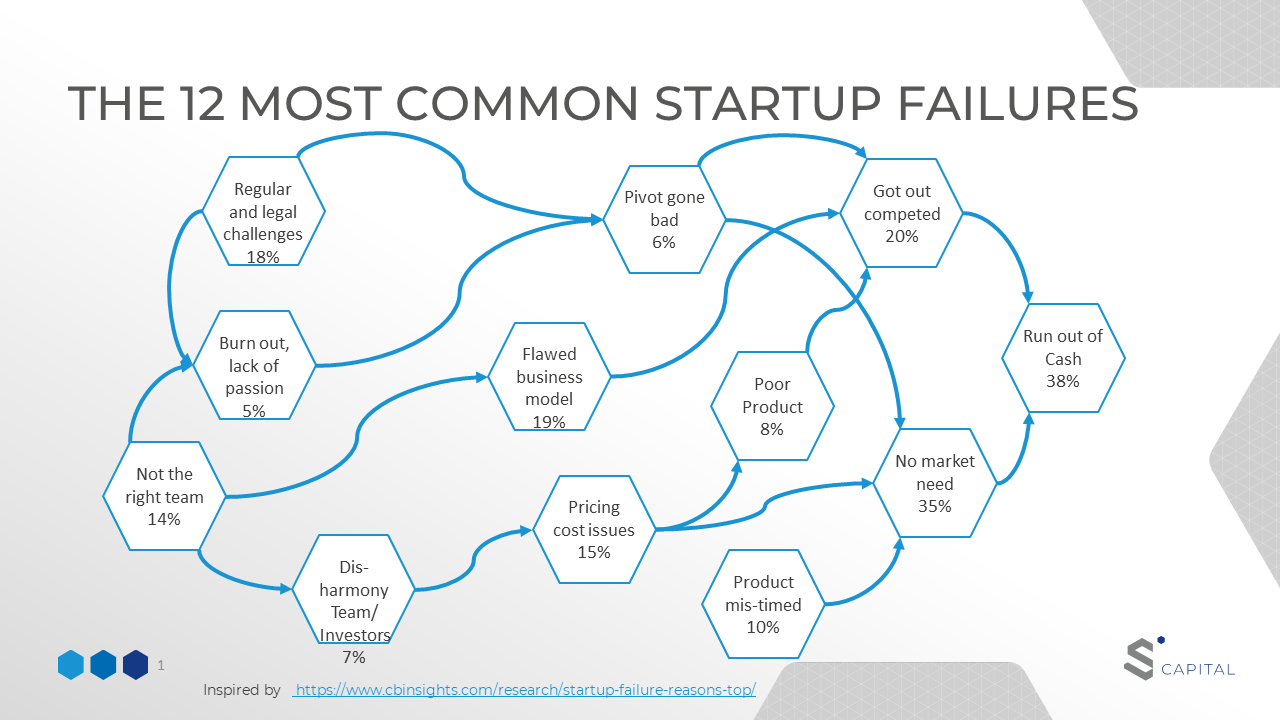
In the recently published article by CB Insights, titled The 12 most common reasons startups fail, are the results of a survey / research on why startups fail.
It is always a very painful experience when a startup fails. Often the reasons are searched for, especially on the part of the investors, who usually lose their invested capital irretrievably. Of course, one would like to draw at least a learning experience from it, according to the motto “one either wins in capital or in experience“.
If you now look at the most frequently mentioned reasons for failure according to the ranking of CB Insights, you would get the impression that most of the reasons have as their cause external factors:
- Ran out of cash / failed to raise new capital -> fault of investors
- No market need -> customers simply do not understand the benefit of the product
- Got outcompeted -> others were simply luckier and faster, better, cheaper…
Those are the 3 most frequently mentioned reasons that seem to be responsible for a large part of the failures, whereby multiple mentions are of course possible.
We asked ourselves the question: do these reasons influence each other and perhaps even strengthen each other?
The result is this effect diagram, which makes no claims to absolute truth or scientific analysis. We simply ordered the 12 reasons depending on their effect relationships.

As can be seen, “Not the right team” (that only scored a mere 14% in the review) and “Disharmony among Team / Investors” (7%) are often the root cause of failure. These two reasons are most of the time the original cause for the other reasons downstream.
There’s another reason with a high influence factor, but that one is definitely outside the influence of the startup: “Regular/legal Challenges”. All other reasons are the responsibility of the founders/teams.
Therefore it is extremely important that early-stage investors correctly assess the team dynamics and the skills/experience of a startup team. Early-stage investors should always see themselves as part of the team to a certain extent and always try to close the gaps with their experience.
In the next post, I will discuss the typical dynamics of a startup. In doing so, we will also see that investors follow a similar pattern, albeit with less difficult consequences in case of failure.
